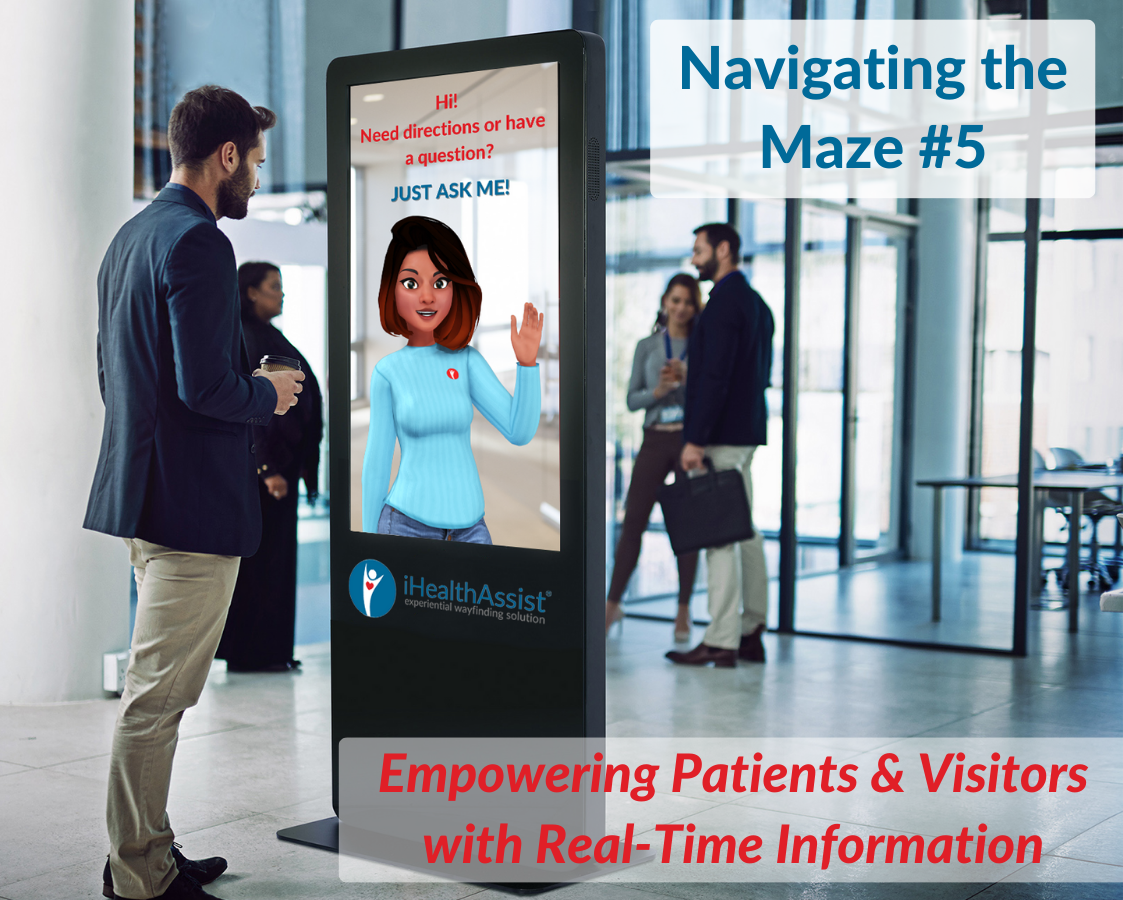In today's digital age, hospitals are leveraging technology to empower patients and visitors with real-time information. By providing access to up-to-date information, hospitals can enhance the overall wayfinding experience,
elevate the patient experience, and increase operational efficiency. Here are some ways hospitals are using real-time information to empower patients and visitors:
Mobile Applications
Hospitals are developing mobile applications that provide users with a wealth of information at their fingertips. These applications allow patients and visitors to access maps, directions, and facility information directly on their smartphones. This keeps patients and visitors informed and engaged throughout their hospital journey.
Digital Signage and Displays
Digital signage and displays are being utilized to communicate real-time information to patients and visitors. These displays, strategically placed in high-traffic areas, can provide real-time updates on wait times, queue numbers, and department schedules. By displaying this information clearly and visibly, hospitals can empower individuals to make informed decisions and plan their visits accordingly. Digital signage can also be used to communicate important announcements, safety information, and wayfinding instructions, ensuring that patients and visitors have access to the information they need when they need it.
Voice Assistants and Chatbots
Voice assistants and chatbots are becoming increasingly popular in providing real-time information and assistance to patients and visitors. Hospitals are implementing voice-enabled devices or chatbot functionalities on their websites or mobile applications, allowing users to ask questions and receive instant responses. These virtual assistants can provide directions, answer frequently asked questions, and provide updates on wait times or appointment statuses. By leveraging artificial intelligence and natural language processing, hospitals can deliver personalized and timely information, enhancing the convenience and accessibility of their services.
Increased Patient Safety
Navigating a complex hospital layout can pose safety risks, particularly in emergencies. An effective wayfinding solution enables patients, visitors, and staff to quickly locate emergency exits, critical care units, and other essential areas. This promotes a safer environment, as people can promptly access the necessary resources during emergencies.
Cost Savings
Efficient wayfinding can lead to cost savings in various ways. By reducing patient delays and optimizing workflow, hospitals can operate more efficiently, potentially saving on operational costs. Additionally, clear signage and directions can help minimize instances of missed appointments or rescheduled procedures, reducing financial losses associated with no-shows.
Improved Visitor Experience
Hospital visitors, such as family members and friends, also benefit from an effective wayfinding solution. They can easily find patient rooms, waiting areas, cafeterias, restrooms, and other amenities. This improves visitor satisfaction, enables them to provide support to patients more effectively, and encourages positive engagement with the hospital.
Humanizing the patient experience
Enhanced Reputation and Loyalty
Providing a seamless and user-friendly wayfinding experience reflects positively on the hospital's reputation. Patients, visitors, and staff appreciate the institution's commitment to their convenience and well-being. This can enhance patient satisfaction, loyalty, and the overall perception of the hospital in the community, potentially leading to increased referrals and continued support.
By harnessing the power of real-time information, hospitals can empower patients and visitors to navigate the complex healthcare environment with ease. Whether through mobile applications, digital signage, or voice assistants, providing up-to-date and personalized information improves the overall wayfinding experience and ensures individuals have the necessary information to make informed decisions. As technology continues to advance, the potential for real-time information to revolutionize hospital wayfinding and enhance the patient and visitor experience is limitless.
In summary, an effective wayfinding solution in a hospital facility improves the patient experience, enhances staff efficiency, reduces delays, ensures safety, saves costs, enhances visitor satisfaction, and contributes to a positive reputation. By optimizing navigation within the hospital, it helps create a more compassionate and efficient healthcare environment.

 Julia Corbin
Julia Corbin